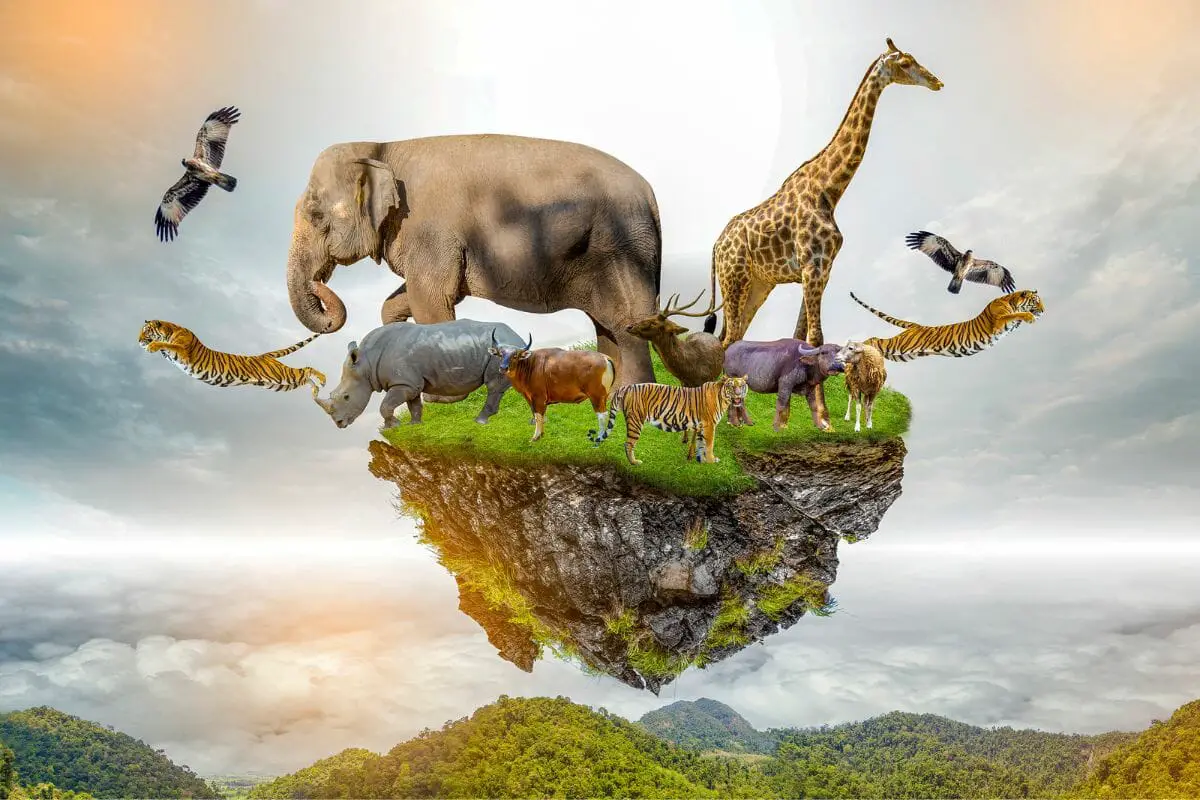Conservation officers and activists face challenges all over the world, but the obstacles blocking conservation efforts in Ethiopia are especially difficult to overcome.
Despite being naturally extremely biodiverse, Ethiopia is struggling to protect its wildlife from issues such as habitat loss and extinction.

There are several reasons why this has become a problem, including legal oversights, finances, and the strained relationship between the government and local communities.
This is a brief overview of the many challenges that leaders of conservation efforts in Ethiopia face in the present day, from legal issues to relational struggles.
Obstacles To Ethiopian Conservation Efforts
1. Outdated And Unclear Laws
The primary obstacle preventing Ethiopian conservation leaders from implementing the necessary changes to keep the country’s wildlife safe is the current law.
At the moment, the laws in place to protect wildlife are not only outdated, but also unclear and therefore difficult to enforce.
Although new laws are being drafted and are in the process of being revised, the transition process has been a long one and it’s still ongoing.
This means that National Wildlife policy in Ethiopia is still not clear and is lacking in administrative procedures that are accepted on an international level.
Until the law regarding wildlife conservation in Ethiopia becomes clearer, enforcing it will continue to be difficult, meaning that the hands of conservation workers are essentially tied when it comes to protecting wildlife in an efficient manner.
2. Limited Resources And Finances
Unfortunately, the resources needed to keep Ethiopian wildlife populations thriving are limited due to the fact that the country is struggling agriculturally.
The issue becomes more complex in light of the fact that, at the present time, there is a direct conflict of interest between food production and animal conservation.
In order to produce more food, more land needs to be cultivated and turned into grazing pastures.
However, cultivating the land also means destroying wildlife resources, so the wildlife populations that conservation activists are trying to protect become further depleted due to habitat loss and a lack of food.
The Ethiopian people and government are therefore in a difficult position of choosing between increasing food production (and thus, food security) and maintaining natural resources.
A solution to this problem must be found in order for wildlife conservation efforts to be successful in the future.
In addition to a conflict of resources, Ethiopia is experiencing financial difficulties which make the successful implementation of conservation efforts(see also: Why Do Conservation Efforts Fail? 5 Reasons Why) all the more challenging.
The fact that conservation efforts in Ethiopia are so severely underfunded comes back to the issue of unclear and outdated legislation.
There is no clear framework for financial procedures when it comes to wildlife conservation, (see also: Alaska Wildlife Conservation Center: Details And Location)so the budget for these efforts is currently very low and what little funding there is can’t be distributed effectively because there’s no administrative structure.
With that being said, there is hope on the horizon since the Ethiopian government has expressed willingness to commit to following Biodiversity Conventions and steps have been taken by EWCO to ensure that biological resources are managed in a sustainable way.
The hope is that this will lead to more effective prioritization of wildlife conservation in future discussions about budgeting.
3. Community-Enforcer Tensions
In order for Ethiopia’s wildlife to be successfully protected, it is clear that local communities need to be given an active role. However, this has not been the case in the past, and it continues to be an issue today.
In the past, where wildlife conservation efforts (see also: A Guide To Wildlife Conservation Efforts In Tanzania)have been enforced by the government, the result has been detrimental for local communities.
Many people have been forced to relocate against their well and have been denied rights to the land they had always considered their own.
Understandably, this has led to a very strained relationship between local communities and enforcers of wildlife conservation efforts in Ethiopia.
This hostility has slowed the progress of conservation efforts because, for obvious reasons, local communities are less willing to cooperate with what has been a threat to their stability and security in the past.
Hopefully, this is something that can be addressed in the future through the use of Park-Community committees.
These committees are now in place to liaise between conservation activists and local communities so that locals can participate actively in these efforts, although ongoing plans for integrated development have continued to strain this important relationship.
4. Lack Of Trained Personnel
Trained and skilled personnel are necessary for successful wildlife conservation, and this is something that Ethiopian conservation organizations are lacking at the moment.
Skilled personnel must be able to operate at both regional and federal levels to carry out the plans that have been made regarding EWCO’s restructuring.
These are complex plans that involve transforming National Parks into Federal Parks and dividing conservation areas outside of these parks into both private and regional parks.
Executing these plans would require many more trained staff members than are currently employed, but the manpower simply isn’t there currently.
5. The Issue Of Responsibility

All of the issues outlined above need to be addressed quickly and efficiently if wildlife conservation (see also: All You Need To Know About The North American Wildlife Model Of Conservation)efforts in Ethiopia are to be successful in forthcoming years.
However, in order for them to be addressed, it needs to be made clear where responsibility lies.
At the moment, there is no clear structure of roles and responsibilities between wildlife organizations and the government when it comes to conservation(see also: Wildlife Conservation Officer: Roles And Responsibilities).
This means that efforts have largely come to a standstill.
Drafts of wildlife policy and legislation are not being endorsed by the government due to the need for revision surrounding the process of regionalization.
In response, regional governments are being instructed to increase capacity while not having the personnel or resources to do so, and the laws regarding wildlife conservation remain outdated in the meantime.
If wildlife conservation efforts in Ethiopia are going to progress, there needs to be a clear division of responsibility so that processes such as these can unfold smoothly.
Frequently Asked Questions
What Environmental Issues Does Ethiopia Face?
Ethiopia is currently facing many environmental issues, namely biodiversity loss, deforestation, pollution, land degradation, soil erosion, and water scarcity.
Does Ethiopia Have A Wildlife Management Policy?
Ethiopia has both regional and federal wildlife management policies and follows numerous international conventions with the goal of enabling wildlife conservation(see also: What Is The Goal Of Wildlife Conservation?).
The problem is that much of the law is outdated and the wording is unclear, which is an obstacle to enforceable conservation efforts.
What Is Ethiopia’s Wildlife Conservation Authority?
Ethiopia’s authority for wildlife conservation is EWCA, which stands for Ethiopian Wildlife Conservation Authority.
This organization takes on the responsibility of managing national parks and ensuring that practices such as hunting are regulated to protect biodiversity.
Final Thoughts
Ethiopia has taken many steps in the right direction in recent years when it comes to wildlife conservation, but outdated laws and resource conflicts along with tensions between locals and wildlife conservationists have made effective conservation efforts difficult.
Additionally, financial obstacles such as disorganized budgeting and underfunding, a shortage of trained personnel, and a lack of clear allocation of responsibilities has slowed down progress.
Responsibility must first be clearly assigned before laws can be amended and relationships between local communities and conservationists mended.
Only then can Ethiopia make further progress in its wildlife conservation (see also: 5 Important Wildlife Conservation Schemes India Are Using Right Now) efforts moving forward.
- 15 Most Common Animals Living In Ponds - 2024-04-23
- What are the Characteristics Of a Wolf – (Characteristics & Interesting Facts) - 2024-04-23
- Animals That Live In The Abyssal Zone - 2024-04-22








